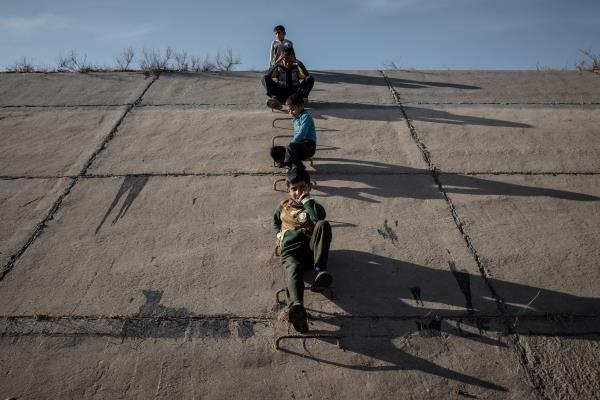
8 December 2016, Rome - Civil conflict and weather-related shocks have severely stressed food security in 2016, increasing the number of countries in need of food assistance, according to a FAO report. The new edition of the Crop Prospects and Food Situation report, released today, highlights 39 countries that are in need of external assistance for food.
While the outlook for global cereal supplies is improving due to generally favourable growing conditions for crops, the legacy of recent droughts persists, as do the negative effects of a spate of conflicts.
Agricultural forecasts suggest robust grain harvests are on the horizon, but hunger will likely intensify in some regions during the lean seasons before the new crops have matured.
In Southern Africa, where El Niño effects sharply curtailed food production in 2016, the number of people requiring outside assistance from January through March 2017 is expected to significantly increase compared to the same period a year ago. Child stunting rates are "significantly high" in the most troubled areas, notably Madagascar, Malawi and Mozambique, the report notes.
In some regions, inadequate stocks of cereal and legume seeds due to two consecutive poor harvests may limit plantings. FAO and governments are implementing agricultural support programmes to improve access to key farming inputs.
Conflicts cast a long shadow on food security
To facilitate humanitarian response planning, the report identifies the primary causes of local food crises. These range from exceptional shortfall in food production and widespread lack of access - due to low incomes, high prices or disrupted distribution networks - to the impact of conflicts on local food security conditions.
Civil conflicts and their consequences, including refugee movements that are burdening host countries such as Cameroon and Chad, are cited in 21 of the 39 countries. Widespread conflict can lead to the loss and depletion of households' productive assets, as in Central African Republic, and to security concerns that hinder farming activities, as in South Sudan.
In parts of South Sudan, improved harvests are likely to have only a short-lived effect as ongoing conflict has reduced the ability to engage in agriculture, posing extra risks for the most vulnerable communities.
Continuing civil conflict in Syria has led to 9.4 million people requiring food assistance. This year's wheat production is estimated to be around 55 percent below its pre-crisis level. The ongoing conflict in Yemen has likely increased the number of food-insecure people from the 14.2 million people assessed in June, the report said. The recent escalation of conflict in Iraq is triggering a widespread internal displacement. Acute food insecurity affects more than 8 million people in Afghanistan and their numbers are likely to increase with the return of around 600,000 refugees from Pakistan before the end of 2016.
The number of food insecure people in Nigeria is above 8 million and is projected to increase to 11 million by August 2017. The ongoing conflict in northern states curtailed plantings, while the sharp depreciation of the Naira currency has raised domestic food prices and affected regional trade as more Nigerian cereals are exported while fewer livestock are imported.
Agricultural trends appear poised to improve after rough 2016
Droughts and weather effects linked to El Niño triggered significant crop shortfalls in 2016 in several countries. Africa's aggregate cereal production declined in 2016 despite some sub-regional gains, notably in West Africa and the Sahel region, which is on track for a record cereal production. Maize output in Southern Africa decreased sharply, severely stressing food security conditions.
Poor harvests triggered sharply higher prices for staple maize in Malawi, where 6.5 million people are expected to be food insecure during the upcoming lean period. On a positive note, with El Niño over, preliminary estimates point to a 27 percent increase in maize plantings for South Africa's 2017 crop, by far the region's largest producer.
While much of Asia benefited from robust food production in 2016, led by a sharp recovery in India, the impact of long-running conflicts in several Near Eastern countries continues to severely depress agricultural production despite generally beneficial weather conditions for staple grain crops.
In Latin America and the Caribbean, expectations of a production rebound in Central America in 2016 are welcome, following the drought-affected outputs in the previous year, while the 2017 planting season in South America is off to a favourable start after a reduced 2016 crop mostly due to droughts in Bolivia, Brazil and Paraguay.
The 39 countries currently in need of external food assistance are Afghanistan, Burkina Faso, Burundi, Cameroon, Central African Republic, Chad, Congo, Democratic People's Republic of Korea, Democratic Republic of the Congo, Djibouti, Eritrea, Ethiopia, Guinea, Haiti, Iraq, Kenya, Lesotho, Liberia, Libya, Madagascar, Malawi, Mali, Mauritania, Mozambique, Myanmar, Nepal, Niger, Nigeria, Pakistan, Papua New Guinea, Sierra Leone, Somalia, South Sudan, Sudan, Swaziland, Syria, Uganda, Yemen and Zimbabwe.